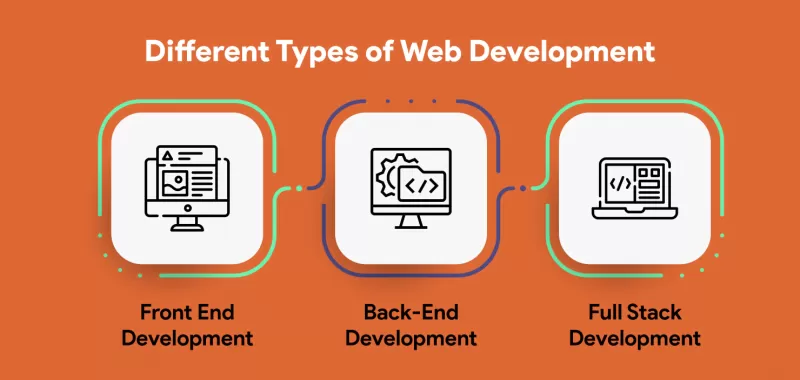
Web development is a vast field that plays a crucial role in the digital landscape, powering everything from simple blogs to complex e-commerce platforms. If you're looking to understand the basics of web development, a common question you might ask is: What are 3 types of web development? In this comprehensive article, we'll delve into the three main types of web development, exploring each in detail, and explaining how they contribute to creating functional, dynamic, and user-friendly websites.
Before we answer the question, What are 3 types of web development?, it's important to recognize why web development is so essential in today's digital age. Every website or web application you interact with is the product of meticulous development work. This involves designing, coding, and maintaining websites and web applications to ensure they function properly across all devices and browsers.
Understanding the different types of web development is crucial for anyone looking to build a website, whether for personal use, a small business, or a large enterprise. By knowing the three main types, you can better communicate your needs with developers and ensure your website is built with the right technology stack to achieve your goals.
Web development can be broadly categorized into three primary types: front-end development, back-end development, and full-stack development. Each type has its specific roles, responsibilities, and technologies. Let's explore each one in detail.
Front-end development, also known as client-side development, is the process of designing and implementing the visual aspects of a website or web application. This is the part of the website that users interact with directly in their web browsers.
A front-end developer is responsible for everything that users see and interact with on a website. This includes the layout, design, images, text, buttons, and navigation menus. The goal is to create an intuitive, aesthetically pleasing, and responsive user experience.
One of the critical aspects of front-end development is ensuring that a website is responsive. Responsive design ensures that a website looks and functions well on a variety of devices, including desktops, tablets, and smartphones. This involves using flexible layouts, scalable images, and CSS media queries to adjust the site’s appearance based on the screen size.
Back-end development, or server-side development, focuses on the behind-the-scenes aspects of a website or web application. While front-end development deals with what users see, back-end development involves managing the data and servers that support the website’s functionality.
A back-end developer is responsible for building and maintaining the technology that powers the components that enable the user-facing side of a website. This includes working with databases, server-side programming, and server configuration to ensure the website functions smoothly and can handle user requests efficiently.
Back-end development also involves setting up and managing servers where websites and applications are hosted. This includes configuring server environments, managing security, and ensuring that the site can scale to handle varying levels of traffic. Developers often use platforms like AWS (Amazon Web Services) or Heroku to deploy and manage web applications.
Full-stack development combines both front-end and back-end development. A full-stack developer has the skills and expertise to handle all aspects of a web application, from the user interface to the server-side logic and database management.
A full-stack developer is versatile, capable of working on the front-end, back-end, and everything in between. This means they can develop an entire web application from start to finish, ensuring that all parts work together seamlessly.
A full-stack developer needs to be proficient in both front-end and back-end technologies, including:
One of the significant advantages of full-stack development is the ability to oversee the entire development process. This holistic approach ensures that all parts of a website or web application work together efficiently. Full-stack developers are also highly valued in the industry due to their broad skill set, making them adaptable to various project needs.
Understanding the different types of web development is crucial whether you’re a business owner looking to build a website or someone interested in entering the field of web development. Knowing the distinctions between front-end, back-end, and full-stack development helps you make informed decisions about the technology stack, the type of developers you need, and the overall project scope.
The choice between front-end, back-end, and full-stack development depends on the specific requirements of your project:
So, what are 3 types of web development? They are front-end development, back-end development, and full-stack development. Each type plays a crucial role in the creation and maintenance of websites and web applications, contributing to the overall user experience, functionality, and performance. By understanding these three types of web development, you can better navigate the digital landscape and ensure that your web projects are executed successfully.
For businesses looking to create a robust online presence, working with a skilled web development company is essential. Sympaweb, a leading web design and development company based in Jordan, offers comprehensive services that cover all aspects of web development. Whether you need a visually appealing front-end, a powerful back-end, or a full-stack solution, Sympaweb has the expertise to bring your vision to life and help your business thrive in the digital age.